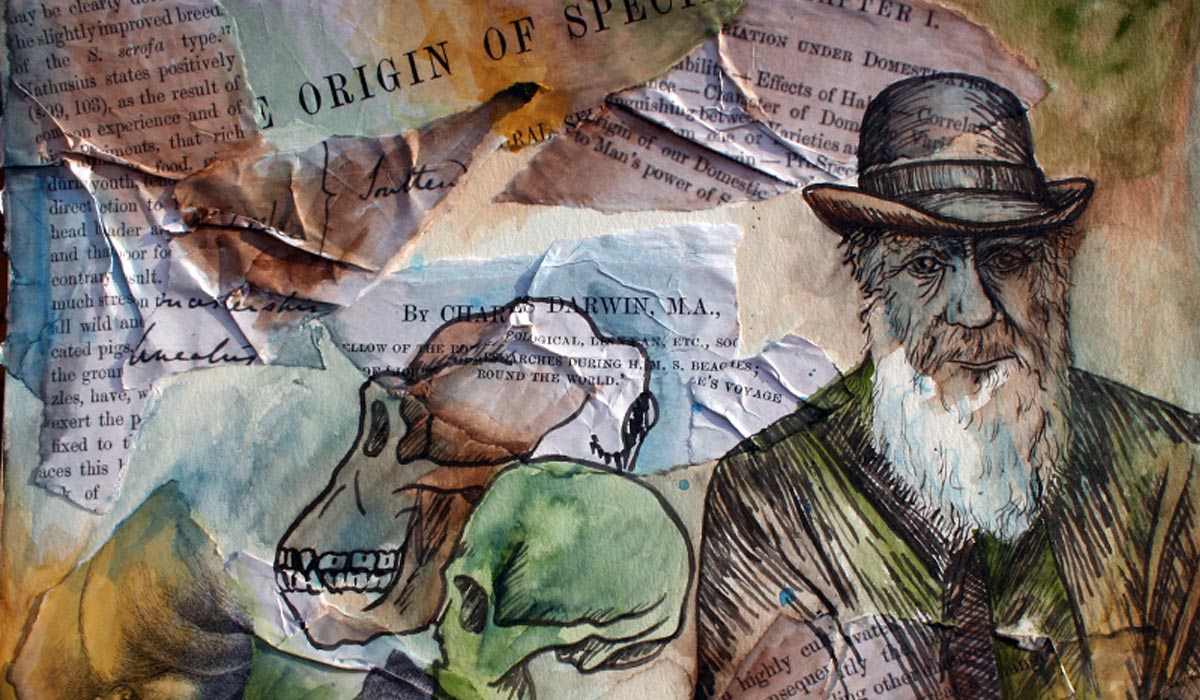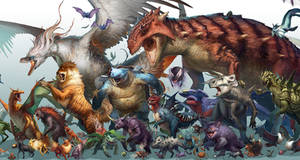
February 12 marks Charles Darwin’s 206th birthday.
His career was long and illustrious, and he conceived one of the most influential ideas of all time: the theory of evolution. This theory states that life on earth slowly changed and developed over millions of years, with each species passing along the traits that made them better suited to survive in their environments. This concept is commonly referred to as “survival of the fittest.”
Darwin also theorized that by way of evolution, modern humans and modern apes had actually evolved into separate species from a common ancestor, making apes our “cousins” in evolutionary terms. The idea that humans descended from monkeys is an erroneous misinterpretation of this idea; Darwin never believed any such thing.
Today, a great deal of the study of life is based on Darwin’s writings including, of course, evolutionary biology.
But important scientific theories have never existed in a vacuum. Leonardo Da Vinci’s legacy is emblematic of this truth, for the simple reason that he was both a scientist and a painter. More recently, last year’s blockbuster Interstellar relied heavily on theories developed by both Albert Einstein and Stephen Hawking. These intersections of scientific theory and artistic expression are hardly unique.
A 2009 exhibition (still available for viewing as a coffee table book) titled "Endless Forms: Charles Darwin, Natural Science, and the Visual Arts” sought to illuminate the relationship between Darwin’s widely-read and influential theories and artists who employed these ideas in their work. The exhibit sought to make the case that through their own reading or through their associates in the scientific world, impressionists like Claude Monet, Paul Cézanne, and Edgar Degas were influenced by Darwin’s work. The exhibit included Monet’s Rocks at Port-Coton, The Lion Rock and Belle-Ile, drawing comparisons between the imagery and Darwin’s ruminations on the earth’s age and the powerful forces of nature that shaped it over time. Meanwhile, Degas’s Little Dancer Aged Fourteen was included to show how Degas illustrated animalistic features in the human form.
John Maeda, former president of the Rhode Island School of Design wrote in Scientific American:
Artists and scientists tend to approach problems with a similar open-mindedness and inquisitiveness—they both do not fear the unknown, preferring leaps to incremental steps.”
The similarity between the way that artists approach ideas and the way that scientists approach them means that there is a natural conversation happening between the two fields; it’s been taking place since the dawn of human history. If you’re in doubt, just look up at the night sky, and consider some of the constellations that you know.
With that conversation in mind, we wish Darwin a happy birthday. Though he is no longer here to celebrate it, his ideas continue to provide fertile ground for anyone grazing through the fields of science and art, hungering for inspiration.
Featured Gallery
Your Thoughts
- Are art and science inseparable? Is artistic vision needed to mold scientific experimentations? Are scientific principles needed to give art its structure and context?
- The scientific observations and theories developed by Darwin have made him a controversial figure for the devoutly religious. Galileo suffered the same fate long before Darwin. Do you think it’s possible to separate scientific inquiry from religious beliefs? Can you be scientific and religious at the same time?
- Should an artist study science to improve his or her art? How light refraction creates colors, how muscles shape body motion, how water carves different stones differently, ad infinitum. Does a knowledge of what goes on beneath surfaces make the artistic representation of those surfaces all the more “accurate?”








































